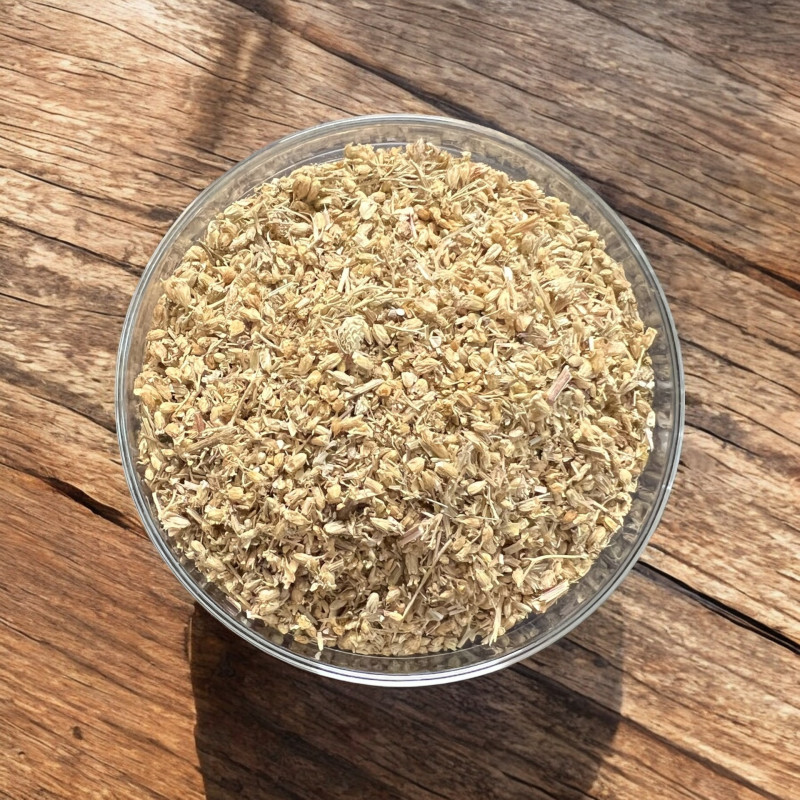
Reference: gentiane


Yarrow and its benefits have likely been known since the time of Neanderthals.
It’s also frequently used to flavor beer.
 Delivery
Delivery
Mondial Relay
 Returns
Returns
See conditions
 Payments
Payments
100% secure
Livré en sachet refermable
°°°
Uses in Cooking and Beyond:
Yarrow is primarily used for its numerous medicinal properties, known since ancient times. The entire plant is edible, from the leaves to the stems and flowers. Its intense yet bitter flavor somewhat limits its culinary uses, but the flowers can be added in small amounts to omelets, as well as certain creams and custards.
However, yarrow is best known for its use in Northwestern Europe as part of a blend called "gruit," used to flavor beer until the 16th century, before the widespread adoption of hops.
Who Am I?
Origin: Albania, Gramsh region
Scientific Name: Achillea millefolium
Common Names: Turkey herb, carpenter’s herb, coachman’s herb, soldier’s herb, cut herb, Venus eyebrows, bleeding herb.
Yarrow is a hardy, long-lived perennial. Its upright stems can reach up to 80 cm in height. The elongated, dark green, finely cut leaves (2 to 15 cm) have a slightly camphorous scent. Its flattened flower clusters, in white, pink, or purple, bloom from June to September, appearing at the top of the stems. The harvest takes place in June.
This plant is widespread across the Northern Hemisphere, from Eurasia to North America, and grows in sunny meadows, even dry ones, with low-calcium soils, as well as along roadsides and in vacant lots.
A Little History:
Yarrow’s name derives from Achilles, who is said to have used the plant to heal his soldiers’ wounds during the Trojan War.
This plant was discovered in a Neanderthal tomb during archaeological excavations in Iraq. Early hominids apparently used a rudimentary plant-based pharmacy. Ancient Greek and Roman texts also mention it, as does Persian literature.
It is, however, contraindicated during pregnancy, breastfeeding, and for children under 12.
Data sheet
Reference: gentiane
Reference: 9N7669901
Reference: 112930001
Reference: gentiane
Reference: 112930001
Reference: 9K5061101
Reference: 7K4954201
Reference: 3N7201902
Reference: PL-EK0-07
Reference: laurierE
Reference: 6L5609803
Reference: 20731803
Reference: 11N7866301
Reference: angelique
Reference: 408164502
Reference: aubepinefl
Reference: 6K4878201
Reference: 9N7669901
Reference: 6N7456401

Yarrow and its benefits have likely been known since the time of Neanderthals.
It’s also frequently used to flavor beer.